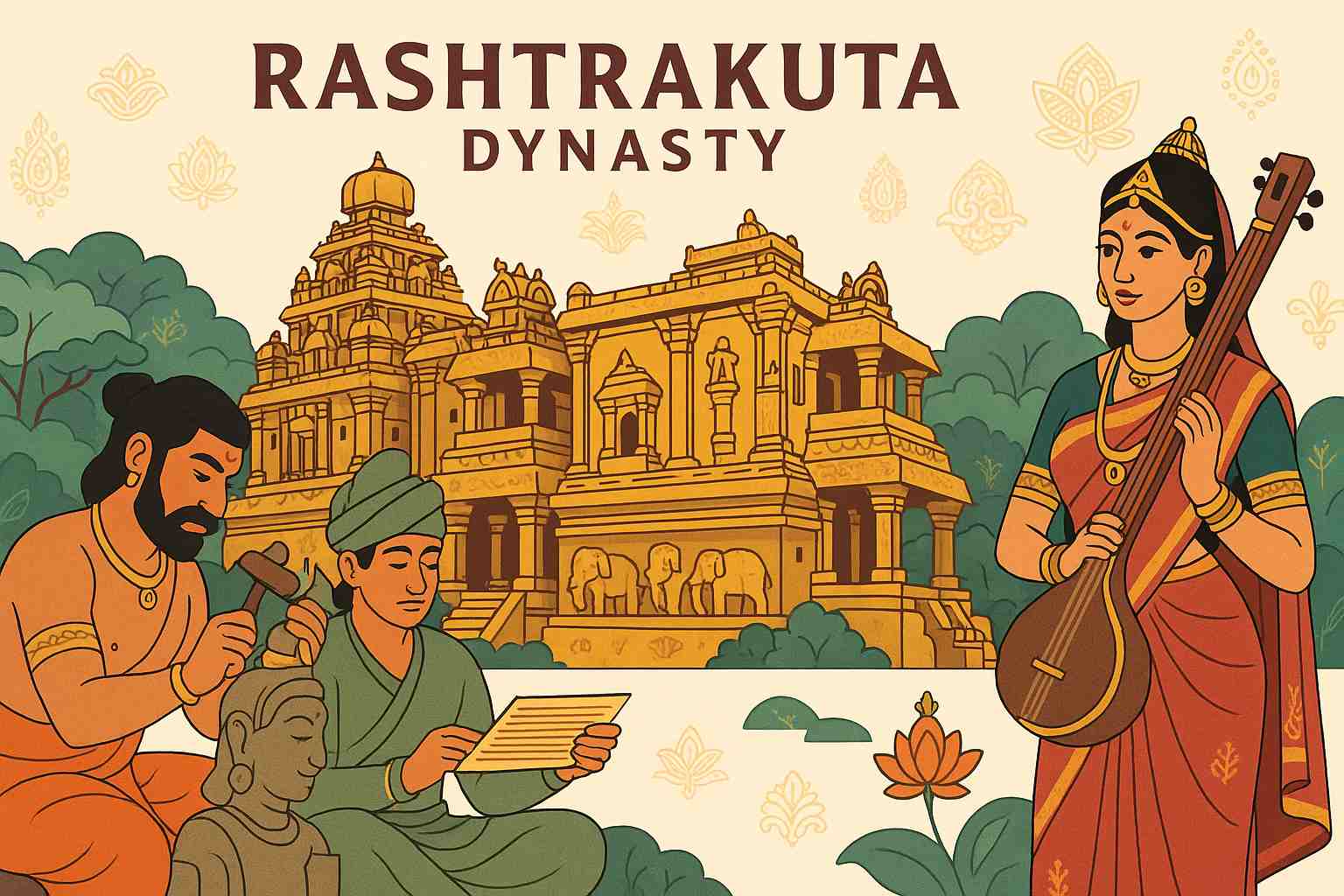
The Rashtrakutas: History Shows Impact on Indian Culture
Imagine standing before a mountain, not to climb it, but to carve a temple out of it. A temple so grand, so intricate, that it feels less like human creation and more like a divine dream turned into stone. This isn't a fantasy; it's the reality of the Kailasa Temple at Ellora, a breathtaking gift from the Rashtrakuta dynasty. Their story isn't just about kings and conquests; it's about a deep, heartfelt connection to art, faith, and the very soul of Indian culture.
Between the 6th and 10th centuries, while many powers rose and fell, the Rashtrakutas didn't just rule; they built a legacy that continues to echo through the corridors of Indian history. Let's take a walk back in time and feel the essence of their glorious reign.
From Feudatories to Founders: The Dawn of an Era
Every great story has a humble beginning. The Rashtrakutas started as chieftains under the Chalukya dynasty in the Deccan region. The name itself, "Rashtrakuta," translates from Sanskrit to "chief of a realm," a hint of the grand destiny that awaited them. It was the visionary leader, Dantidurga, who saw beyond his role as a feudatory and dared to establish an independent empire.
Under powerful rulers like Krishna I, Govinda III, and the legendary Amoghavarsha I, the empire grew into a formidable force. Their influence stretched from the Vindhya mountains in the north down to the Kaveri basin in the south. They weren't just warriors; they were master strategists, creating a well-oiled administrative system that empowered local leaders, ensuring peace and prosperity across their vast lands.
A Tapestry of Beliefs: Where All Faiths Found a Home
One of the most beautiful aspects of the Rashtrakuta rule was their open-hearted embrace of different faiths. In their kingdom, Shaivism, Vaishnavism, Jainism, and even Buddhism flourished side-by-side. It was a time of incredible spiritual harmony, a testament to their wisdom as rulers.
They didn't just tolerate different beliefs; they actively patronised them. This inclusive spirit is a cornerstone of India's spiritual roots, a tradition of unity in diversity that the Rashtrakutas championed with pride. They understood that a kingdom's strength lies in its people's freedom to connect with the divine in their own way.
The Language of the Land: Nurturing Literature and Poetry
While Sanskrit was the language of the court, the Rashtrakutas had a special love for regional languages, particularly Kannada. The great king Amoghavarsha I, a scholar and poet himself, penned 'Kavirajamarga,' the earliest available work on poetics in the Kannada language. This wasn't just a book; it was a declaration of love for a language and its people.
This dedication to preserving and nurturing literature is a mission that deeply resonates with us at Bhaktilipi. Just as the Rashtrakutas created a space for stories and poems to thrive, we aim to be a digital sanctuary for our timeless devotional literature. We believe that these words hold the power to connect us to our roots and inspire our future.
If you feel a connection to this mission of preservation, we invite you to explore our work. Learn more about Bhaktilipi and join our community of readers dedicated to our rich heritage.
Where Stone Sings: The Architectural Marvels of the Rashtrakutas
Words can barely do justice to the architectural genius of the Rashtrakutas. Their legacy is etched forever in the rock-cut caves of Ellora and Elephanta. These aren't just structures; they are epic poems carved in stone.
- The Kailasa Temple (Ellora): This is the dynasty's crowning glory. Imagine workers chipping away at a single, massive rock for years, not just to build but to reveal the temple hidden within. The temple, dedicated to Lord Shiva, is adorned with intricate carvings depicting scenes from the Ramayana and Mahabharata, a testament to their deep devotion and unparalleled skill.
- The Elephanta Caves (Mumbai): A short boat ride from Mumbai lies another Rashtrakuta masterpiece. The caves, with their colossal sculptures of Lord Shiva in various forms, exude a powerful spiritual energy. Visiting this place feels like stepping into a sacred space where time stands still, reminding us how heritage and culture are intertwined.
Understanding the Rashtrakuta Legacy: Your Questions Answered
Many of us have heard the name 'Rashtrakuta' but might have questions about their true impact. Let's explore some of these thoughts together.
What was the core identity of the Rashtrakutas?
They were a royal Indian dynasty that governed a significant part of the subcontinent, primarily from the Deccan region, between the 8th and 10th centuries. More than just rulers, they were patrons of art, protectors of diverse faiths, and pioneers in administration, leaving a mark that distinguishes them in the annals of Indian history.
How did they manage to influence Indian culture so deeply?
Their influence came from a place of genuine respect for culture. They created an environment where literature, especially in regional languages like Kannada, could flourish. Their courts were vibrant hubs for scholars and artists, and their open-minded religious policies created a society where different traditions could enrich one another, weaving a stronger cultural fabric for the entire nation.
Beyond the famous Kailasa temple, what were their architectural contributions?
While the Kailasa temple is rightly celebrated as a wonder of the world, their skill is also evident in the majestic Elephanta Caves and numerous other Jain and Hindu temples across their empire. Their style was bold and dynamic, and they mastered the art of rock-cut architecture, a technique that required immense vision and precision.
What about their role in the economy and trade?
The Rashtrakutas were shrewd traders. They understood the importance of economic stability and maintained active trade relationships with distant lands, including the Arab world. This not only brought wealth and prosperity to their empire but also facilitated a wonderful exchange of ideas and cultures, making their kingdom a cosmopolitan hub of its time.
A Legacy That Inspires
The story of the Rashtrakutas is a powerful reminder of a golden era in Indian history. They show us that a truly great empire is built not just on military strength, but on respect for diversity, a love for art, and a commitment to nurturing the soul of its culture. Their legacy isn't just in museums or history books; it lives in the magnificent temples they carved, the literature they championed, and the spirit of tolerance they fostered.
At Bhaktilipi, we are constantly inspired by such chapters of our history. We invite you to continue this journey of discovery with us. Follow our stories and share in the beauty of our devotional and cultural heritage.
Stay connected with the stories that shape us. Subscribe to Bhaktilipi for updates on our shared spiritual and historical journey.
A passionate group of people dedicated to preserving India's knowledge of Dharma, Karma, and Bhakti for ourselves and the world 🙏.
